The aging of refractory black carbon (rBC) aerosol by sulfate-driven chemistry has been constrained in coal-fired power-plant plumes using the NOAA WP-3D research aircraft during the Southern Nexus (SENEX) study, which took place in the Southeastern US in June and July of 2013. A Single Particle Soot Photometer (SP2) determined the microphysical properties of rBC-containing particles including single-particle rBC mass and the presence and amount of internally-mixed non-rBC material, hereafter referred to as “coatings”. Most power-plant influenced air was associated with very slightly increased amounts of non-refractory material, likely sulfate internally mixed with the rBC, however this increase was statistically insignificant even after semi-Lagrangian exposure for up to 5 h. On average, the increase in coating thickness was 2 ± 4 nm for particles containing 3–5 fg rBC. Similarly, the number fraction of rBC-containing particles that could be identified as internally mixed was increased by plume chemistry by only 1.3 ± 1.3%. These direct measurements of microphysical aging of rBC-containing aerosol by power plant emissions constrain the enhancement of sulfate chemistry on both rBC’s column-integrated absorption optical depth, and rBC-containing aerosol’s ability to act as cloud condensation nuclei. Appling Mie and k-Köhler theories to the SP2 observations, permits the resulting effect on rBC ambient light-absorption to be capped at the 2–6% level.
1.
Introduction and building system
In last years, it was noted that several real-world phenomena cannot be modeled by partial or ordinary differential equations or classical difference equations defined using the standard integrals and derivatives. These problems required the concept of fractional calculus (fractional integrals and derivatives), where the classical calculus was insufficient. Differential equations of fractional order are considered to be interesting tools in the modeling of several problems in different fields of engineering and science, as electrochemistry, control, electromagnetic, porous media, viscoelasticity. See for example [1,2,3,4,5,6,7]. On the other hand, in the recent years impulsive differential equations have become essential as mathematical models of problems in social and physical sciences. There was a great development in impulsive theory in particular in the field of impulsive differential equations with fixed moments. For instance, see the works of Samoilenko and Perestyuk [8], Benchohra et al. [9], Lakshmikantham et al. [10], etc. Further works for differential equations at variable moments of impulse have been appeared. For example, we cite the papers of Frigon and O'Regan [11,12], Graef and Ouahab [13], Bajo and Liz [14], etc.
It is also observed that fixed point theory is an important mathematical tool to ensure the existence and uniqueness of many problems intervening nonlinear relations. As a consequence, existence and uniqueness problems of fractional differential equations have been resolved using fixed point techniques. This theory has been developed in many directions and has several applications. Moreover, we could apply it in different types of spaces, like metric spaces, abstract spaces, and Sobolev spaces. This use of fixed point theory makes very easier the resolution of many problems modeled by fractional ordinary, partial differential and difference equations. For instance, see [15,16,17,18,19,20].
The theory for impulsive fractional differential equations in Banach spaces have been sufficiently developed by Feckan et al. [21] by using fixed point techniques. In the real world, many phenomena are subject to transient external effects as they develop. In comparison to the entire duration of the phenomenon being observed, the durations of these external effects are incredibly brief. The logical conclusion is that these external forces are real impulses. Impulsive differential equations are now a major component of the modeling of physical real-world issues in order to study these abrupt shifts. Biological systems including heartbeat, blood flow, and impulse rate have been discussed in relation to many applications of this kind of impulsive differential equations. For more details, see, [22,23,24,25,26,27].
On the other hand, in last years the study of Hyers-Ulam (HU) stability analysis for nonlinear fractional differential equations has attracted the attention of several researchers. Note that HU stability is considered as an exact solution near the approximate solution for these equations with minimal error. The following works [28,29,30,31,32] deal with such a stability analysis. For Hyers-Ulam (HU) stabilities, there are generalized Hyers-Ulam (GHU), Hyers-Ulam-Rassias (HUR), and generalized Hyers-Ulam-Rassias (GHUR) stabilities.
Much of the work on the topic of fractional differential equations deals with the governing equations involving Riemann-Liouville and Caputo-type fractional derivatives. Another kind of fractional derivative is the Hadamard type [33], which was introduced in 1892. This derivative differs significantly from both the Riemann-Liouville type and the Caputo type in the sense that the kernel of the integral in the definition of the Hadamard derivative contains a logarithmic function of arbitrary exponent. It seems that the abstract fractional differential equations involving Hadamard fractional derivatives and Hilfer-Hadamard fractional derivatives have not been fully explored so far. Several applications of where the Hadamard derivative and the Hadamard integral arise can be found in the papers by Butzer, Kilbas and Trujillo [34,35,36]. Other important results dealing with Hadamard fractional calculus and Hadamard differential equations can be found in [37,38]. The presence of the δ-differential operator (δ=xddx) in the definition of Hadamard fractional derivatives could make their study uninteresting and less applicable than Riemann-Liouville and Caputo fractional derivatives. Moreover, this operator appears outside the integral in the definition of the Hadamard derivatives just like the usual derivative D=ddx is located outside the integral in the case of Riemann-Liouville, which makes the fractional derivative of a constant of these two types not equal to zero in general. Hadamard [33] proposed a fractional power of the form (xddx)α. This fractional derivative is invariant with respect to dilation on the whole axis.
The existence and HU stability of the following implicit FDEs involving Hadamard derivatives were investigated in [39] as follows:
where υ∈[1,G], G>1, HDϖ refers to the Hadamard fractional (HF) derivative of order ϖ.
The following coupled system containing the Caputo derivative was examined in [40] for its existence, uniqueness, and several types of Hyers-Ulam stability:
where υ∈U=[0,1], ϖ,θ∈(2,3] and ϕ,ψ:U×R2→R are continuous functions.
For the following coupled system containing the Riemann-Liouville derivative, the authors of [41] demonstrated the existence, uniqueness, and several types of Hyers-Ulam stability:
where υ∈U=[0,G], G>0, ϖ,θ∈(1,2] and π1,π2,ℓ1,ℓ2≠1, Dϖ,Dθ are Riemann-Liouville derivatives of fractional orders ϖ, θ respectively and ϕ,ψ:U×R2→R are continuous functions.
Inspired by the previous work, we investigate the coupled impulsive implicit FDEs (CII-FDEs) incorporating Hadamard derivatives as follows:
where ϖ,θ∈(1,2], ϕ,ψ:U×R2→R, B:U×C(U,R)→R and B∗:U→R are continuous functions and
The derivatives HDϖ,HDθ are the Hadamard derivative operators of order ϖ and θ, respectively; z(υ+i),s(υ+i) are right limits and z(υ−i),s(υ−i) are left limits; Ii,Ij,˜Ii,˜Ij:R→R are continuous functions. The system (1.1) is used to describe certain features of applied mathematics and physics such as blood flow problems, chemical engineering, thermoelasticity, underground water flow, and population dynamics. For more details, we refer the readers to see the monograph [42].
Using the Banach contraction and Kransnoselskii FP theorems, we establish necessary and sufficient criteria for the existence and uniqueness of a positive solution for the problem (1.1). Additionally, we analyze other Hyers-Ulam (HU) stabilities such as generalized Hyers-Ulam (GHU), Hyers-Ulam-Rassias (HUR), and generalized Hyers-Ulam-Rassias (GHUR) stabilities.
2.
Basic facts
In this part, we present certain key terms and lemmas that are utilized throughout the rest of this paper, for more information, see [42,43].
Assume that PC(U,R+) equipped with the norms ‖z‖=max{|z(υ)|:υ∈U}, ‖s‖=max{|s(υ)|:υ∈U} is a Banach space (shortly, BS), then the products of these norms are also a BS under the norm ‖(z+s)‖=‖z‖+‖s‖. Assume that ℑ1 and ℑ2 represent the piecewise continuous function spaces described as
with norms
respectively. Clearly, the product ℑ=ℑ1×ℑ2 is a BS endowed with ‖(z+s)‖ℑ=‖z‖ℑ1+‖s‖ℑ2.
The following definitions are recalled from [44].
Definition 2.1. For the function z(υ), the Hadamard fractional (HF) integral of order ϖ is described as
where Γ(.) is the Gamma function.
Definition 2.2. For the function z(υ), the HF derivative of order ϖ∈[a−1,a), a∈Z+ is described as
Lemma 2.3. [45] Assume that ϖ>0 and z is any function, then the derivative equation HDϖz(υ)=0 has solutions below:
and the formula
is satisfied, where ri∈R, i=1,2,...,a and ϖ∈(a−1,a).
Theorem 2.4. [46] Assume that Ξ is a non-empty, convex and closed subset of a BS ℑ. Let E and ˜E be operators so that
(1) for z,s∈Ξ, E(z,s)+˜E(z,s)∈Ξ;
(2) the operator ˜E is completely continuous;
(3) the operator Ξ is contractive.
Then there is a solution (z,s)∈Ξ for the operator equation E(z,s)+˜E(z,s)=(z,s).
3.
Definitions of HU stability
The definitions and observations below are taken from [47,48].
Definition 3.1. The coupled problem (1.1) is called HU stable if there are Λϖ,θ=max{Λϖ,Λθ}>0 so that, for φ=max{φϖ,φθ} and for each solution (z,s)∈ℑ to inequalities
there is a unique solution (˜z,˜s)∈ℑ with
Definition 3.2. The coupled problem (1.1) is called GHU stable if there is Φ∈C(R+,R+) with ξ(0)=0, so that, for any solution (z,s)∈ℑ of (3.1), there is a unique solution (˜z,˜s)∈ℑ of with of (1.1) fulfilling
Set ℧ϖ,θ=max{℧ϖ,℧θ}∈C(U,R) and Λ℧ϖ,℧θ=max{Λ℧ϖ,Λ℧θ}>0.
Definition 3.3. The coupled problem (1.1) is called HUR stable with respect to ℧ϖ,θ if there is a constant Λ℧ϖ,℧θ so that, for any solution (z,s)∈ℑ for the inequalities below
there is a unique solution (˜z,˜s)∈ℑ with
Definition 3.4. The coupled problem (1.1) is called GHUR stable with respect to ℧ϖ,θ if there is a constant Λ℧ϖ,℧θ so that, for any a proximate solution (z,s)∈ℑ of (3.2), there is a unique solution (˜z,˜s)∈ℑ of with of (1.1) fulfilling
Remark 3.5. If there are functions ℜϕ,ℜψ∈C(U,R) depending upon z, s, respectively, so that
(R1) |ℜϕ(υ)|≤φϖ, |ℜψ(υ)|≤φθ, υ∈U;
(R2)
Then, (z,s)∈ℑ is a solution of the system of inequalities (3.1).
4.
Existence consequences
In the following part, we establish requirements for the existence and uniqueness of solutions to the suggested system (1.1)
Theorem 4.1. For the function w, the solutions of the following subsequent linear impulsive BVP
takes the form
where u=1,2,...,k and
Proof. Assume that
Using Lemma 2.3, for υ∈(1,υ1], we have
Again, applying Lemma 2.3, for υ∈(υ1,υ2], we get
Using initial impulses
From l1 and l2 on (4.4), one has
Analogously for υ∈(υu,G), we have
and
Applying the boundary stipulations z(G)=1Γ(ϖ)∫G1ln(Gη)ϖ−1B(η,z(η))dηη and z′(G)=B∗(z), we obtain that
and
for u=1,2,...,k. Substituting r1 and r2 in (4.5), we have (4.1).
Corollary 4.2. Theorem 2.4 provides the following solution for our coupled problem (1.1):
where u=1,2,...,k and
where u=1,2,...,m.
For convenience, we use the notations below:
Hence, for υ∈U, Eqs (4.7) and (4.8) can be written as
for u=1,2,...,k and
for u=1,2,...,m.
If z and s are solutions to the CII-FDEs (1.1), then for υ∈U, we can write
for u=1,2,...,k and
for u=1,2,...,m.
Our next step is to convert the considered system (1.1) into a FP problem. Give the definition of the operators E,˜E:ℑ→ℑ as
where
and
The preceding assertions must be true in order to conduct further analysis:
(A1) For υ∈U and a1,a2,p1,p2∈R, there exist ℓ0,ℓ1,ℓ2,ρ0,ρ1,ρ2∈C(U,R+), so that
with ˜ℓ0=supυ∈Uℓ0(υ), ˜ℓ1=supυ∈Uℓ1(υ), ˜ℓ2=supυ∈Uℓ2(υ), ˜ρ0=supυ∈Uρ0(υ), ˜ρ1=supυ∈Uρ1(υ), and ˜ρ2=supυ∈Uρ2(υ)<1.
(A2) For the continuous functions B∗,Iu,˜Iu:R→R there are positive constants
OB,OI,O˜I,O′′I,O′′˜I,˜OB,˜OI,˜O˜I,˜O′′I,˜O′′˜I so that for any (z,s)∈ℑ
where u={0,1,2,...,k}.
(A3) For all υ∈U and s,z∈R, there are ϱ1,δ1,ϱ2,δ2∈C(U,R+), so that
with ϱ∗1=supυ∈Uϱ1(υ), δ∗1=supυ∈Uδ1(υ), ϱ∗2=supυ∈Uϱ2(υ), δ∗2=supυ∈Uδ2(υ)<1.
(A4) For each a1,a2,˜a1,˜a2,p1,p2,˜p1,˜p2∈R, and for all υ∈U, there are constants Lϕ,Lψ>0, and ˜Lϕ,˜Lψ∈(0,1) so that
(A5) For the continuous functions Iu,˜Iu:R→R, there are positive constants LI,L˜I,˜LI,˜L˜I so for any (z,s),(˜z,˜s)∈ℑ
(A6) For each s,z,˜s,˜z∈R and for all υ∈U, there are LB,LB∗,˜LB,˜LB∗>0, so that
Here, we demonstrate that the operator E+˜E has at least one FP using Kransnoselskii's FP theorem. For this, we choose a closed ball
where
Theorem 4.3. There exists at least one solution to the CII-FDEs (1.1) provided that the assertions (A1) and (A2) are true.
Proof. For any (z,s)∈ℑy, we get
From (4.9), we have
for u=1,2,...,k. This leads to
Analogously, one can write
where
Further, we obtain for u=1,2,...,k, that
From assertion (A1), we can write
which implies that
Taking supυ∈U on (4.14) and using (4.15), one has
In the same scenario, we get
where
Applying (4.12), (4.13), (4.16) and (4.17) in (4.11), we have
which implies that E(z, s)\left(\upsilon \right) +\widetilde{E}(z, s)\in \Im _{x}. After that, for any \upsilon \in U and s, z, \widetilde{s}, \widetilde{z}\in \Im, one writes
Applying (A_{5}) and (A_{6}), one has
where
and
Hence, E is a contraction mapping. Now, we claim that \widetilde{E} is continuous and compact. For this, we build a sequence G_{n} = (z_{n}, s_{n}) in \Im so that \lim_{n\rightarrow \infty }(z_{n}, s_{n}) = (z, s)\in \Im _{x}. Hence, we obtain
Since
and
Applying (4.19) and (4.20) in (4.18), we conclude that
which yields \left\Vert \widetilde{E}(z, s)-\widetilde{E}(z_{n}, s_{n})\right\Vert _{\Im }\rightarrow 0 as n\rightarrow \infty, this proves the continuity of \widetilde{E}. Next, using (4.16) and (4.17), we get
Therefore, \widetilde{E} is uniformly bounded on \Im _{x}. Finally, we show that \widetilde{E} is equicontinuous. To get this result, take \upsilon _{1}, \upsilon _{2}\in U with \upsilon _{1} < \upsilon _{2} and for any (z, s)\in \Im _{x}\subset \Im (clearly \Im _{x} is bounded), we obtain
which yields that
Similarly, we get
Hence
Therefore \widetilde{E} is a relatively compact on \Im _{x}. Thanks to the theorem of Arzelà-Ascoli, \widetilde{E} is compact. Thus, it is completely continuous. So, the CII-FDEs (1.1) admits at least one solution. This finishes the proof.
Theorem 4.4. Assume that (A_{4}) – (A_{6}) are fulfilled with
then the CII-FDEs (1.1) possesses a unique solution.
Proof. Let \aleph = (\aleph _{1}, \aleph _{1}):\Im \rightarrow \Im be an operator defined by \aleph (z, s)\left(\upsilon \right) = \left(\aleph _{1}(z, s), \aleph _{2}(z, s)\right) \left(\upsilon \right), where
for u = 1, 2, ..., k and
for u = 1, 2, ..., m. In light of Theorem 4.3, one can obtain
for u = 1, 2, ..., k. Passing \sup_{\upsilon \in U}, we have
where
Analogously,
where
Hence
This suggests that \aleph is a contraction. Consequently, the CII-FDEs (1.1) has a unique solution.
5.
Analyzing stabilities
In this section, we examine various stability types for the suggested system, including the HU, GHU, HUR, and GHUR stability.
Theorem 5.1. If the assertions (A_{1}) – (A_{3}) and the condition (4.21) are true and
then the unique solution of CII-FDEs (1.1) is HU stable and as a result, GHU stable.
Proof. Take into account that (z, s)\in \Im is an approximate solution of (3.1) and consider (\widehat{z}, \widehat{s})\in \Im is a solution of the coupled problem shown below
From Remark 3.5, we get
It follows from Corollary 4.2 that the solution of system (5.2) is
for u = 1, 2, ..., k and
for u = 1, 2, ..., m. Consider
As in Theorem 4.4, one has
for u = 1, 2, ..., k and
Arranging (5.5) and (5.6), we get
and
respectively. Assume that \Game _{\varpi } = 1-\left(\mho _{1}+\frac{\mho _{2}L_{\phi }}{\widetilde{L}_{\phi }\widetilde{L}_{\psi }-1}\right) \left(\ln \upsilon \right) ^{2-\varpi } and \Game _{\theta } = 1-\left(\mho _{3}+ \frac{\mho _{4}L_{\psi }}{\widetilde{L}_{\phi }\widetilde{L}_{\psi }-1} \right) \left(\ln \upsilon \right) ^{2-\theta }. Then (5.7) and (5.8) can be written as
Hence
where
From system (5.9), we observe that
which yields that
Let us consider \varphi = \max \{\varphi _{\theta }, \varphi _{\varpi }\} and
Then, we can write
which leads to the supposed coupled problem (1.1) is HU stable. Further, if
Then the suggested coupled problem (1.1) is GHU stable.
For the final result, we suppose the following assertion:
(A_{7}) There are nondecreasing functions \gimel _{\varpi }, \gimel _{\theta }\in C(U, \mathbb{R} _{+}) so that
Theorem 5.2. If the assertions (A_{1}) – (A_{3}) and (A_{7}) and the condition (4.21) are fulfilled and
then the unique solution of CII-FDEs (1.1) is HUR stable and consequently GHUR stable.
Proof. According to Definitions 3.3 and 3.4, we can get our conclusion by following the same procedures as in Theorem 5.1.
6.
Illustrative example
Example 6.1. Consider
where \sum_{u = 1}^{10}\frac{1}{B_{u}^{\ast }} < 0.5 for \upsilon \in \lbrack 1, e]. In view of problem (6.1), we observe that \varpi = \frac{6}{5 }, \theta = \frac{5}{4}, G = e, k = 1 and \upsilon _{1} = 1.5. Further, it's simple to locate L_{B^{\ast }} = \widetilde{L}_{B^{\ast }} = 0.5, L_{B} = \widetilde{L}_{B} = \frac{1}{60}, L_{I} = L_{\widetilde{I}} = 0.5, \widetilde{L }_{I} = \widetilde{L}_{\widetilde{I}} = 0.04, L_{\phi } = \widetilde{L}_{\phi } = \frac{1}{70e^{20}} and L_{\psi } = \widetilde{L}_{\psi } = 0.04. Based on Theorem 4.4, we find that
Therefore problem (6.1) has a unique solution. Further
Therefore, according to Theorem 5.1, the coupled system (6.1) is HU stable and consequently GHU stable. Similarly, we can confirm that Theorems 4.3 and 5.2 are true.
7.
Conclusions
In this manuscript, we used fixed point results of Banach and Kransnoselskii to give necessary and sufficient conditions for the existence of a unique positive solution for a system of impulsive fractional differential equations intervening a fractional derivative of the Hadamard type. We also studied some Hyers-Ulam (HU) stabilities such as generalized Hyers-Ulam (GHU), Hyers-Ulam-Rassias (HUR), and generalized Hyers-Ulam-Rassias (GHUR) stabilities. At the end, we provided a concrete example making effective the obtained results.
Acknowledgments
The authors thank the Basque Government for Grant IT1555-22. This work was supported in part by the Basque Government under Grant IT1555-22.
Conflict of interest
The authors declare that they have no competing interests.











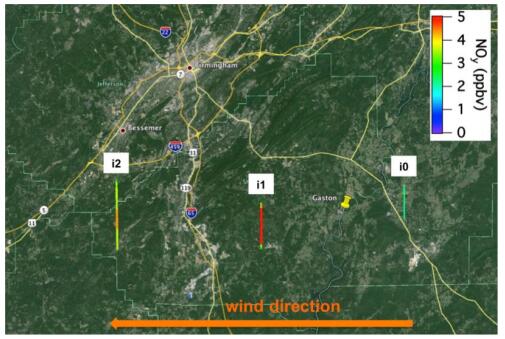
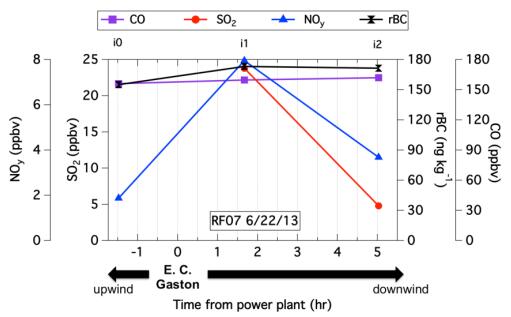

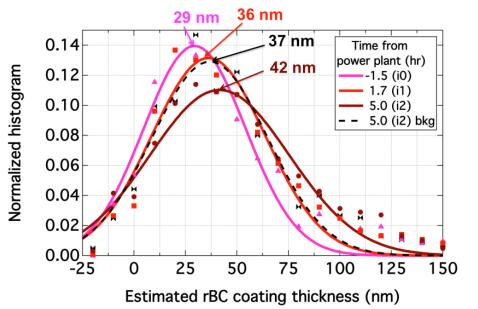
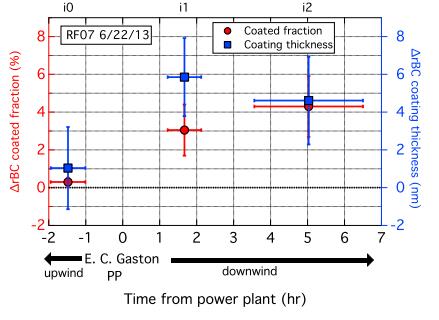
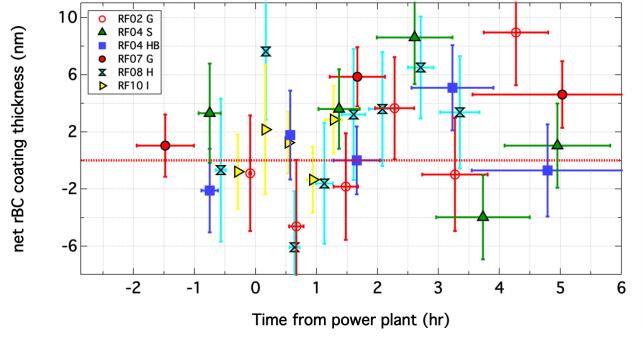
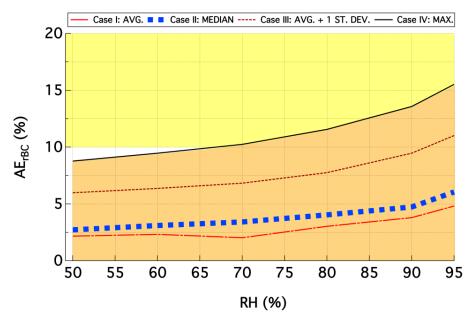


 DownLoad:
DownLoad: